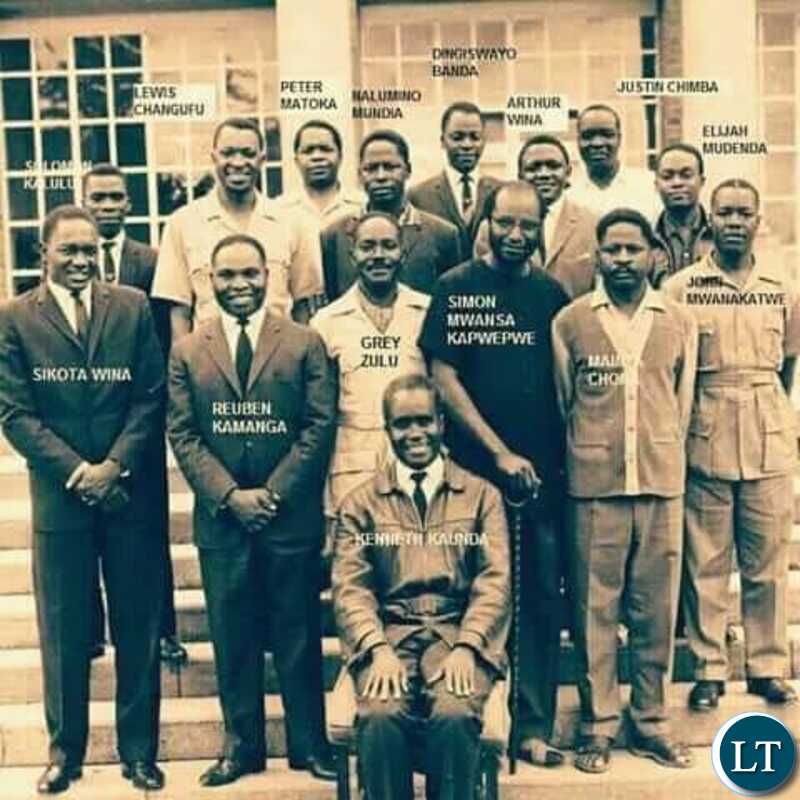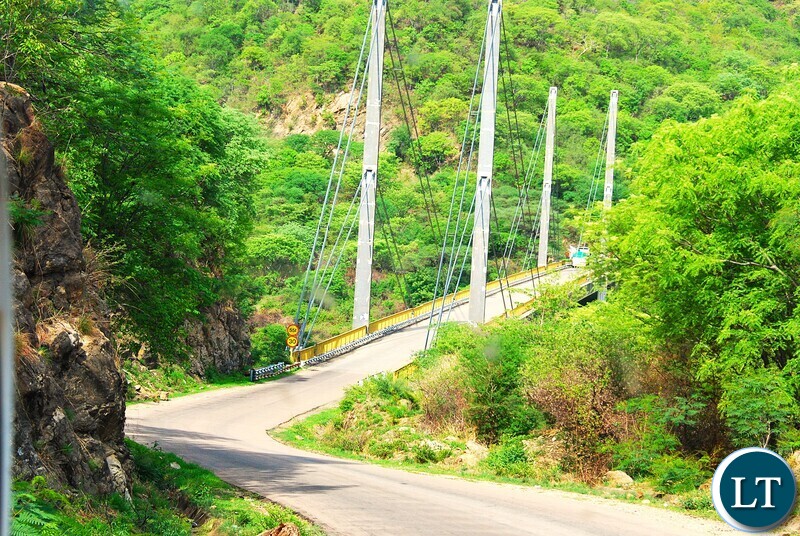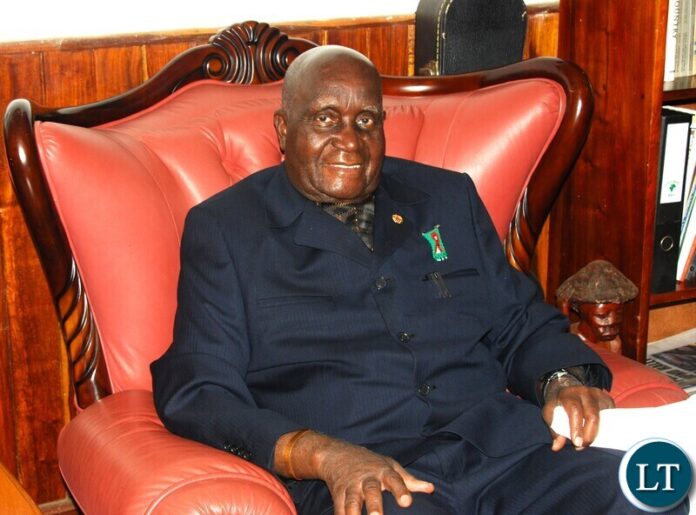I was 10 years old when I attended the Tamanda Dutch Reformed Mission Boys’ Boarding School in the remote district of Chipata right on the border with the Southern African country of Malawi on 24th October 1964. This was 58 years ago from 1964 to 1966 when I did my Standard 3 (now Grade 5) to Grade 7. Mr. Elisa Phiri was a short Headmaster who had red fierce eyes, also my great English teacher.
This was two years after the then British Northern Rhodesia colony gained independence to become the newly independent African country of Zambia. Up to this day, I don’t know what made him do it at that moment. Mr. Phiri digressed from teaching English, and asked the class what we wanted to be when we grew up. The class of 40 students looked at each other blankly in stunned silence. What could village kids in rural African village schools dream about beyond Grade 7 at the time? Then Mr. Phiri gave us his talk.
“What’s the matter with you!” he raised his voice as he slowly swept his gaze at all forty of us in the class. Then he said almost whispering: “You are young. The future for all of you is wide open. Our country of Zambia has just obtained its independence from British colonialism. We will need doctors to cure disease, pilots to fly planes, locomotive drivers to run trains, bankers, teachers, surveyors, nurses, police officers, architects to design homes, engineers. Any of you could even go to college at the new University of Zambia that is being built, get one or two degrees and become Lecturers or professors at university. You need to know not just about our school, our chief, your village, or our new country of Zambia, but about the world. Our country of Zambia, future and the world are waiting for you so long as you work hard in school.”
I beamed and looked around my classmates. That was it! That was the most inspiring message I had ever heard. It instantly ignited my imagination for a kid who had only known about herding goats in the village at Chipewa at that point. The seed was planted. I went on to excel through many very competitive exams to qualify to go to the prestigious Chizongwe Secondary or High School, then to our only national University of Zambia at the time and later went to do my Masters and Ph. D. at Michigan State University in the United States. Sixty years later after Zambia’s independence, I am now a retired Emeritus Professor of Sociology. I am so grateful that the people of Zambia paid for all my education and the education of millions of Zambians over the last 60 years.
What has happened in Zambia during the last 60 years of independence? What were some of my most memorable personal experiences both witnessing and being part of the dramatic social changes that happened in the last 60 years? What do I consider some of the major landmark achievements of my country of Zambia? This article has a quick summary of my personal experiences. This is a disclaimer that this is not a list of a detailed description of what every Zambian let alone non-Zambians and experts would think are the most important achievements of my beloved country of Zambia. That would probably require a book.
First, I will describe where I was at 10 years old and the mood of the country on 24th October 1964. Second, how many Zambians are over 65 years old today and why is this important. Third, I will quickly mention some of the major economic, political, and social changes just after independence and 60 years later in Zambia. Fourth, what will Zambia be like in the next 60 years?
October 24 1964.

On this day, I was at Tamanda boys Dutch Reformed Boarding school in what used to be called Standard 3 during the British colonial era. We were a total of 300 boys who woke up that day very excited because the long-anticipated day of independence from British Northern Rhodesia to the new independent Zambia had arrived. We did not have classes that day.
Out teachers sent us to the bush to get leaves that we tied around our waists. The teachers made 4 dancing stations on the small field next to our classrooms. The stations were assigned dances. One was Nyau, second was chitelele women’s dance, third was ngoma Ngoni war dance, fourth was chimtali women’s dance. After dancing for about 20 minutes, students would switch to a different dance station to dance the different dance. In the afternoon we played interdormitory pick up of cifwayo or pick up soccer or football. We had no special foods to eat to celebrate.
Challenges of Development of Independent Zambia

Zambia was facing many major problems at independence especially great expectations for development; education, transportation, health, natural resources, agriculture, employment, mining sector, housing, democracy, self-governance, freedom, challenges of tribalism and the country’s political unity, independence for neighboring countries which were still under white or European colonial rule such as Southern Rhodesia (Zimbabwe), Mozambique, Angola, South Africa. Some of the internal problems of Zambia are reflected in these sentences that I wrote in my book.
“Many of these expectations would be fulfilled immediately as Zambia in 1964 had a population of 3.5 million[1] with 900 million pounds[1] in foreign reserves. The country needed the urgent development of massive infrastructure in virtually all phases of the economy. What President Kaunda, the top leadership, and the Zambian people would discover is that the British colonialists had left them with almost nothing to run the newly independent country. Zambia had only 100 Zambians with university degrees, about 1500 Zambians with Form V or Grade 12 school certificates, and only 6000 with junior or two years secondary education[1]. There was a critical shortage of manpower which could also be called a crisis for a country that had an urgent need to achieve high levels of development. The British colonial administration did not leave a reliable police force, an army or an air force. Zambia needed educated, trained, and qualified people in all areas.” (Tembo, Satisfying Zambian Hunger for Culture. 2012, p.334)
Our young country with the leadership of the United National Independence Party (UNIP), President Kaunda, the young Cabinet Ministers went to work to develop the country. There was tremendous euphoria all over the country. I could see change happening to me, around me, and in the area my family lived at Dzoole Primary School along the Chipata and Lundazi Road. I personally witnessed spectacular changes too many to list. New schools were built urgently requiring teacher. For example, my 2 older sisters Mrs. Mtonga and Mrs. Zimba who were 19 and 17 years old went to Minga Teacher Training College for 12 months in 1966. Once they completed their training, they were assigned to schools to teach. Their husbands had also attended teacher training colleges and were already young teachers.
Roads were being tarred or paved, the Lusaka to Chipata road was being paved, roads were being graded, new clinics were being built, teachers were being trained, Zambia Airways was established, the steam engines that used coal to run trains were replaced to diesel engines, there were new Leyland buses for long distance transportation. The University of Zambia was being built. President Kaunda and UNIP policies promoted training skilled manpower to implement Zambianization of workplaces so that Zambians would eventually replace the largely European or bazungu and other foreign expatriate skilled workers. There were spectacular economic, political, and largely peaceful social changes in Zambia. There were some political conflicts. The greatest gift our founders gave us as a nation is the establishment of a non-racial and non-tribal society. UNIP and the national leaders railed against racism and tribalism all the time and promoted love, peace, and “One Zambia One Nation.”
The population of Zambia is 19 million. The proportion of the country that is under 14 years old is 46.7%, those between 15 and 24 years old are 20%, those between 25 to 54 years old are 28.4% and but those between 55 and 64 years old are only 2.9% and those above 65 years old are even smaller at 2.4%. The age statistics that are the most important for the crucial possible important role for understanding 60 years of Zambia’s independence is that Zambians who are younger than 30 years old may be about 70% of the population which is about 13.3 million young girls, boys, women and men. And yet those who are over 65 years old are only 2.4% which is only 456,000. Therefore, there are fewer elders today in Zambia who are my age of 70 years to teach younger people about our experiences during the first years of our independence.
This is why I am appealing to all those Zambians; black, white, and of all backgrounds to write down your experiences and publish books and diaries about our experiences. During the next 60 years, many of us who experienced the first 60 years of Zambia’s independence will have died. Please write diaries about your lives.
By Mwizenge S. Tembo, Ph. D.
Emeritus Professor of Sociology



Thus far we’ve regressed, instead of progressing. I sometimes wish UNIP had continued in power past KK; we would have been in a better place now. Anyways, the best days are always ahead, and the young generation will lead us there. May God bless our youth and inspire them to dream bigger!
Quite early in the struggle, some noticed the weaknesses in KK and concluded that he wasn’t going to be a good leader. Although brutally suppressed, this fact manifested in the outcome of the 1st Rhodesian multiparty elections. Welensky’s National Party got 14 seats, KK’s UNIP got 9 and Nkumbula’s ANC got 7 of the 30 member Legislative Council. If KK and UNIP were that popular they could’ve gotten a clear majority
Nkumbula was forced to get into an alliance with KK and that was the end of his ANC. The earliest activists in Zambia were Lawrence Katilungu, Dauti Yamba, Mbikusita Lewanika and others but their roles have been suppressed to look like KK was the main architect of our Independence. Historians like Sishuwa must rewrite our Independence history to bring out what’s been suppressed
Unfortunately, Sishuwa is NOT a historian but a Political Scientist, that should tell you alot.
Sishuwa is busy fighting New Dawn. As a result his objectivity is compromised.
‘The good old days’ is always a MYTH. The only use for a myth is to teach a lesson. But the past is never better than the present. It is nostalgia and amnesia that makes us think so. Zambians are 20 times better off today than they were 20, 40 or 60 years ago. There were only 4 million of us in 1964, we are now more than 20 million. We have electrified homes, even if they are shacks. We have running tap water, even if it is 20 yards away- still better than river water 10 km away. Let us be thankful and not grumble.
Like the urging at the end of the article. Positive and uplifting. Yes, history has its lessons; but hope is all we have as we trudge on to the future…next sixty years. Thank you Dr. Tembo
I rarely comment on articles, but this is one uplifting one. Having spent some time in Mansa in the late 70’s, running to go get my youngest sister milk and then come back to go and catch up with my elder sister who also had a 20 minute start as I was always racing to 5 km to the milk bar and back, take a shower and race to school passing through villages to catch up with my sister and others. I totally concur with where you are coming from. We have come from so far and evolved. I still give our founding fathers in Dr Kenneth David Kaunda and his team my kudos for liberating other neighbouring countries once we got our own, and got punished for that through economic sanctions by the colonialists in world bank and IMF.
AND from there our decline started
In that picture, is that really Nalumino Mundia? Is it not Edgar Lungu?
Comments are closed.